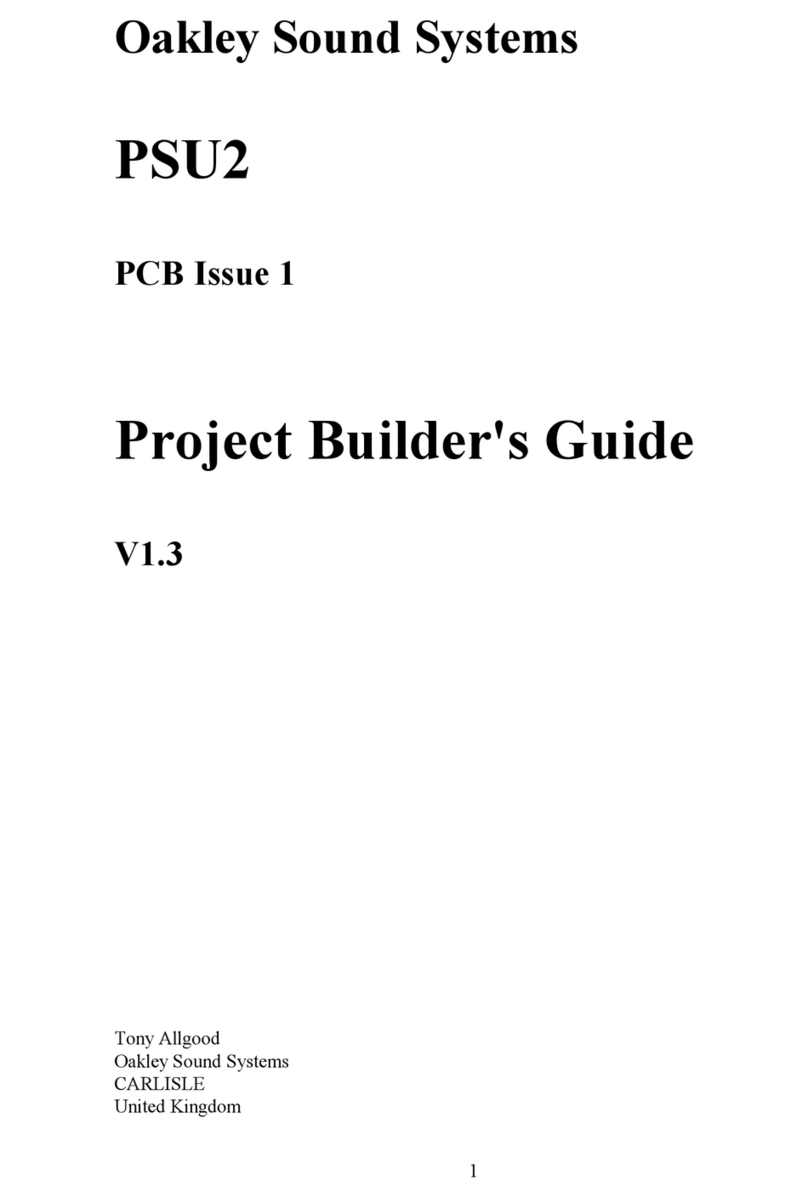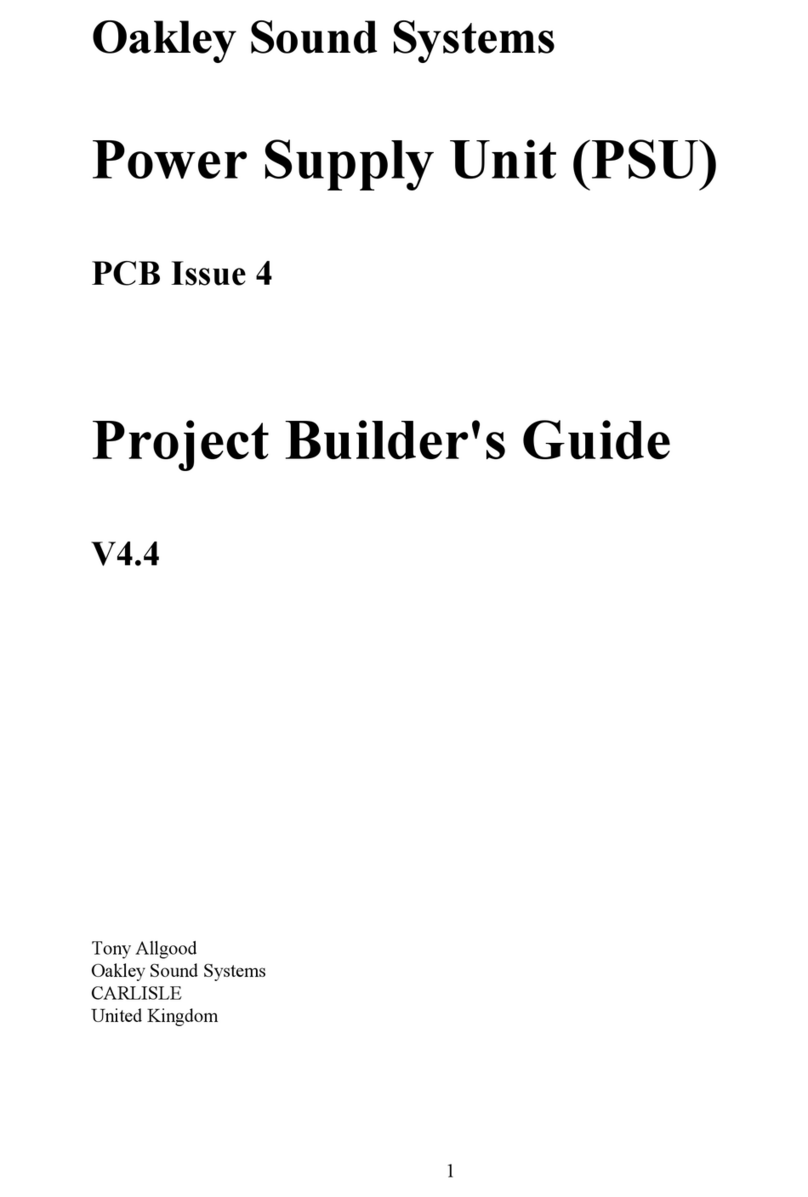Some linelumps, like the Yamaha PA-20 and PA-30, use a split AC output or a centre tapped
AC output. This means it has three wires coming rom it and will use a di erent plug rom the
usual round barrel one you see on the single phase AC wallwarts. With a split AC output the
Oakley RPSU should be wired to work in ull wave recti ication mode.
The Yamaha PA-20 supply is rated to give an output voltage o 35Vac (with a centre tap) at a
load o 0.94A. Once recti ied and smoothed this means that a maximum current o 0.52A per
rail can be drawn rom the RPSU. This is plenty enough to drive the HVM and an SE330.
Two sets o screw terminal blocks are provided or connecting the low voltage AC power
source to the board and the optional power switch. I you are using a single phase wallwart to
power the RPSU module than you need only to use two terminals per terminal block.
The board has our mounting holes or stable placement onto your modular case. Care should
be taken so that the board's various board mounted components do not come into contact with
any part o the enclosure. One o the mounting holes, the top right hand one, is connected to
the ground point o the RPSU via a 'resistor', R5. In most situations R5 will be a low value
resistor but see later or more details on this.
The power supply has two integral use holders in case o a problem with the power supply
circuitry itsel . Two uses are needed i you are using ull wave recti ication, but only one, F2,
is required or hal wave recti ication. The use type should be a slow blow or anti-surge type.
The size is 20mm. It should be rated at between one and two times the maximum current o
your wallwart. Thus a 500mA AC output mains adapter should have a use that is rated
between 500mA and 1A, ideally 750mA. A 1A linelump should have a use that is between 1A
and 2A, ideally 1.5A.
There is one LED indicator or the AC input. This can be built onto the board, itted to the
ront panel or omitted altogether. Both the HVM and SE330 modules have power on
indicator LEDs. However, the RPSU's LED will light as soon as AC power is applied and not
just when the unit is switched on.
As we have seen the standard circuit provides two outputs, one at +15V and one at -15V.
Both output voltages can be inely adjusted with its own trimmer. Unlike some power supplies
the -15V rail will not track the +15V. The RPSU contains two separate, but complementary,
power supplies.
The output voltages are available rom two 3.96mm Molex KK or MTA headers.
* A wallwart is the vernacular term or a low voltage mains adapter that plugs directly into the
wall. These take the orm o a black plastic block that is shaped like an oversized mains plug.
It is called a wart simply because its appearance is somewhat uglier than a normal slimline
plug.
** A linelump does the same job as a wallwart but it generally can handle greater currents.
Because o its increased size it cannot be made so that it will sa ely it into a plug socket
directly. Thus the adapter sits in a black plastic box and connects to the wall via a cable and
traditional mains plug. It is there ore a black plastic lump connected to a line. The Yamaha
PA-20 and PA-30 are such linelumps.
5





























